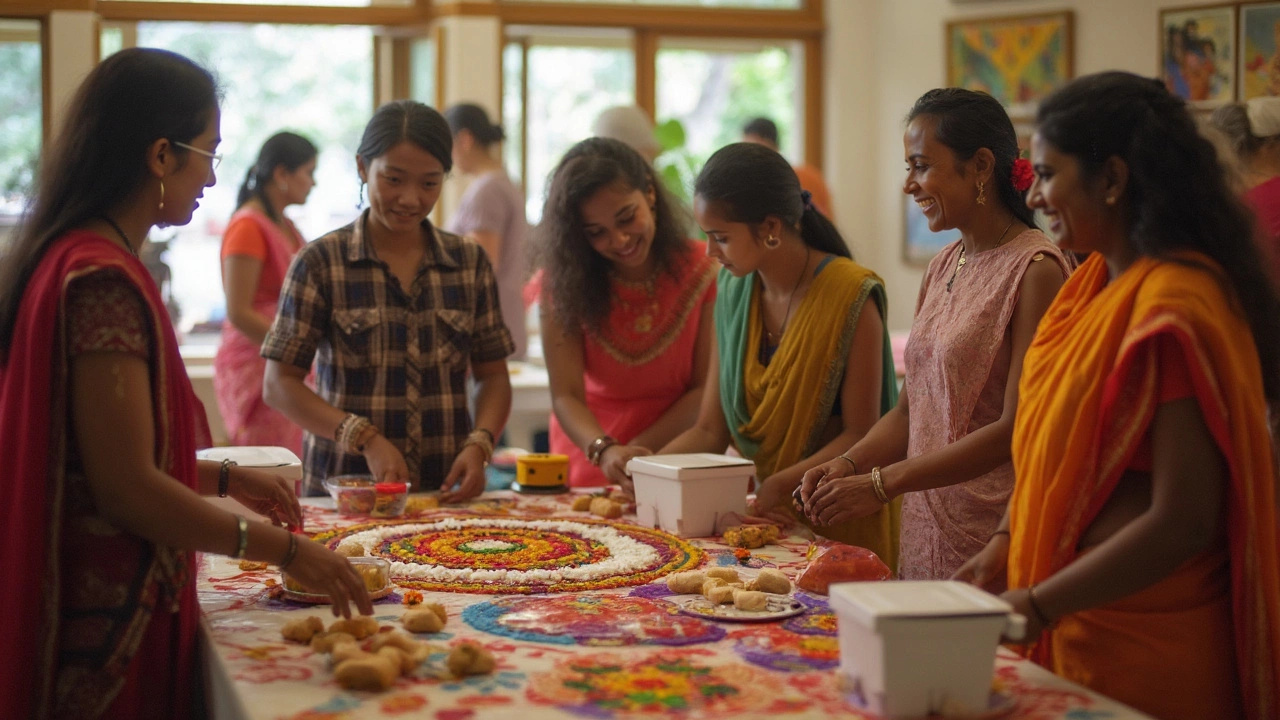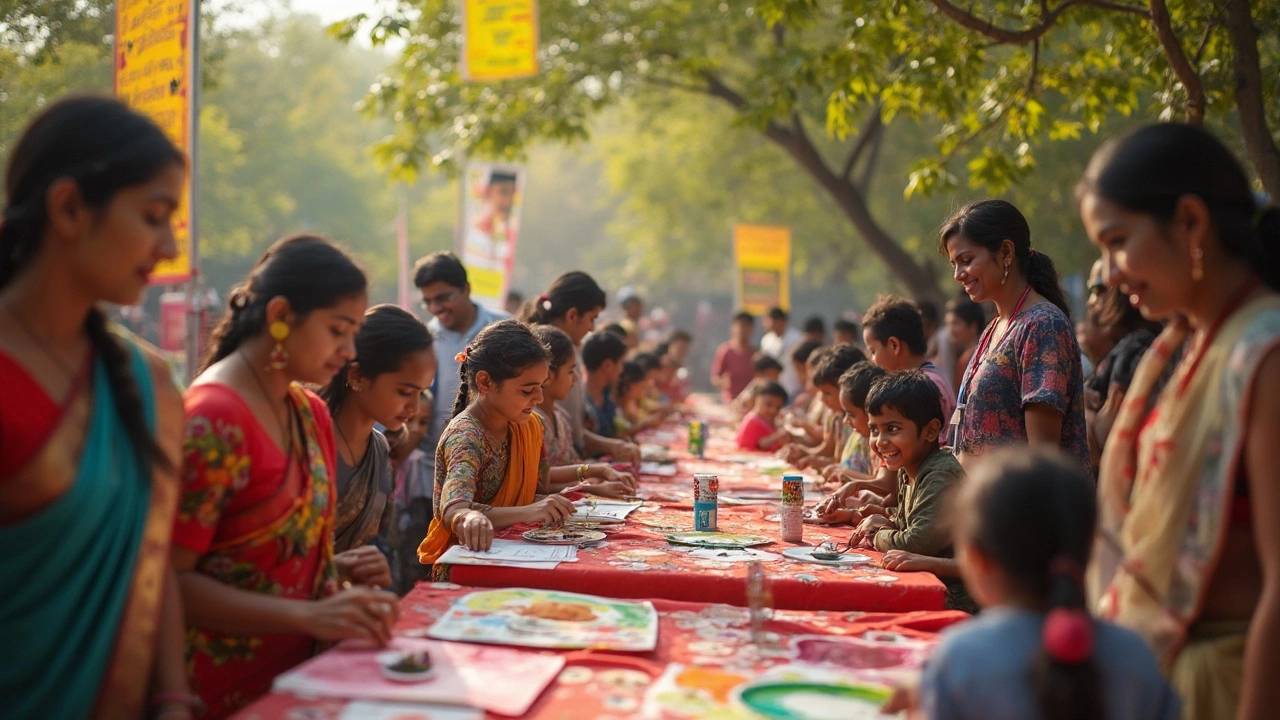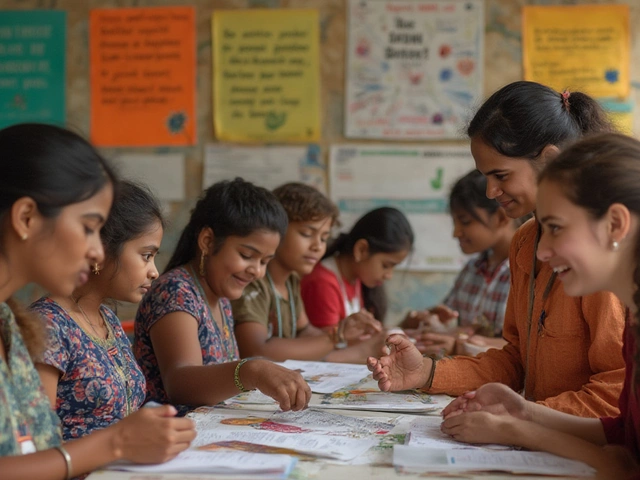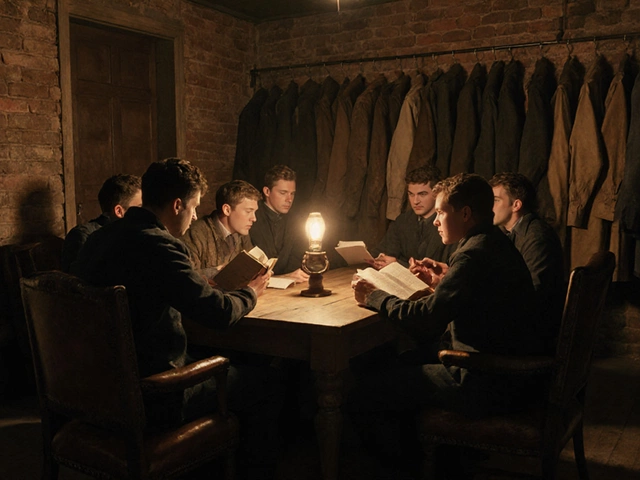Ever been to a fun run, a bake sale, or even a trivia night where the whole point was to raise money for a cause? That's a charity event in action. It's not just about giving money — it's about coming together, having a good time, and helping someone in need all at once.
Charity events come in all shapes and sizes. Some are simple, like collecting canned food at work. Others go big, like gala dinners with fancy outfits and auctions. The goal is always the same: raise funds or awareness for a specific purpose, usually tied to a nonprofit or a community project.
These events tap into the power of community. When people gather for something they care about, they spread the word, offer support, and often give more than they expected. It’s one of the most effective ways for nonprofits to connect with new supporters and keep loyal ones engaged. If you’re wondering what makes a charity event successful or thinking about organizing one, you’re already on the right track by learning the basics right here.
- What Is a Charity Event?
- Popular Types of Charity Events
- How Charity Events Make a Difference
- Planning Basics: What You Need to Know
- Tips for Successful Fundraising
- Getting the Community Involved
What Is a Charity Event?
A charity event is any organized gathering where people raise money or awareness for a nonprofit, a specific cause, or a community project. These aren’t just simple get-togethers—they’re designed to make a real impact. If you’ve ever walked in a Relay for Life, joined a local coat drive, or bought cookies from a school fundraiser, you’ve been part of one.
The main point is always to do good, but charity events can look really different depending on the goal and the group running them. Some are super casual, like a car wash where the proceeds go to a youth center. Others, like marathons or formal banquets, might grab media attention and bring in bigger donations.
You might be surprised at how much these events actually raise. Check out some numbers from the charity sector in 2024:
| Event Type | Average Funds Raised | Common Hosts |
|---|---|---|
| Walk/Run Events | $10,000+ | Health Nonprofits |
| Gala Dinners | $50,000+ | Arts, Education |
| Online Auctions | $5,000+ | Schools, Clubs |
| Community Fairs | $2,000+ | Local Groups |
What makes a charity event different from a plain party or festival is the purpose. Every ticket sold, auction item bid on, or cupcake bought adds up for the cause. Sometimes, these events go beyond money and focus on spreading awareness, like public talks about mental health or environmental cleanups.
A well-run charity event can do a lot: boost donations, draw in volunteers, and get the local community talking about the cause.
Popular Types of Charity Events
Charity events aren’t one-size-fits-all. They come in tons of different flavors, so almost anyone can find something that fits their vibe and gets them excited to pitch in. Here's a closer look at some of the most popular charity event types out there.
- Fun Runs and Walkathons: These are everywhere these days. You sign up, walk or run a set distance, and raise money through sponsorships. Some are themed—think color runs or mud runs—making them feel more like a party than a race.
- Gala Dinners and Auctions: Fancy but effective. These events usually involve dinner, entertainment, and both silent and live auctions. Attendees bid on cool stuff, vacations, or experiences, and the highest bid goes to the cause.
- Charity Concerts or Performances: Local bands, comedians, or dance groups perform, and ticket sales go straight to the charity. These events can bring in large crowds, especially when there’s buzz around the performers.
- Raffles and Lotteries: Sometimes it’s all about luck. People buy tickets and hope to win prizes. While regulations vary, raffles can be super effective for raising quick funds if done properly.
- Community Fairs and Markets: Local vendors, food trucks, and crafters come together, with a cut of profits or entry fees going to the charity. These events boost local business and community spirit all at once.
- Online Campaigns and Virtual Events: Yup, you don’t even have to leave your house. Virtual runs, livestream donation drives, and online auctions exploded during the pandemic and are still popular because anyone can join in, no matter where they are.
Check out some quick stats to put these event types into perspective:
| Event Type | Typical Funds Raised (US) | Average Attendance |
|---|---|---|
| Fun Runs & Walkathons | $10,000 - $200,000 | 150 - 5,000 |
| Gala Dinners | $50,000 - $1,000,000 | 100 - 800 |
| Charity Concerts | $5,000 - $500,000 | 200 - 10,000 |
| Online Events | $1,000 - $100,000 | 50 - Unlimited |
The most important thing? Pick a type of charity event that fits your crowd. Engaging people in something they actually want to do always leads to better turnout and bigger donations. If you can make it unique or add a personal twist, even better.
How Charity Events Make a Difference
Charity events do more than just raise money—they build real change, both for specific causes and in local communities. When people pull together for a charity event, the results are visible and lasting. So, what does this actually look like in real numbers and community impact?
First off, charity events are a top fundraising tool for nonprofits. In the U.S., the 2023 Giving USA report said that nearly 30% of all charitable donations came through fundraising events, which totaled over $120 billion. That’s a huge slice of support that goes straight to medical research, education, disaster relief, and more.
But it’s not just about the cash. Events like these pump energy into good causes in a few major ways:
- Visibility: They get the word out. From hashtags online to posters around town, events give causes a chance to be seen and understood by more people.
- Community Bonds: When neighbors work together, they build trust and teamwork. That stuff sticks, making it more likely people will support future projects.
- Direct Help: Some events, like blood drives or charity builds, deliver direct help instead of money—filling pantries, building shelters, or saving lives in one day.
It helps to see the reach of charity events. Check out some recent facts in this table:
| Type of Charity Event | Average Amount Raised (US, 2023) | Typical Attendance |
|---|---|---|
| Fun Run / Walkathon | $30,000 | 500 participants |
| Benefit Concert | $50,000 | 800 attendees |
| Bake Sale | $800 | 75 people |
| Online Giving Day | $100,000 | 2,500+ donors |
Besides the dollars, charity events also inspire people to keep giving. Someone who joins an event is more likely to become a regular supporter. Studies from Classy.org show event participants are 80% more likely to donate again within the same year. So if you’re hoping to build a long-term movement, a charity event is one of the best places to start.

Planning Basics: What You Need to Know
Setting up a charity event might sound tough, but breaking it down makes it manageable. Whether you’re gathering a few friends or inviting half the town, a good plan can save a ton of stress and help you reach your goals.
First up, get clear about your purpose. Are you fundraising for a school project, a local shelter, or a big national cause? Nail down exactly where the money goes. Donors love to know what their support will achieve. According to Giving USA’s 2023 report, events that clearly show the impact of donations tend to raise up to 30% more.
Next, pick a realistic date and location. Double-check for scheduling conflicts—don’t set your event on the same day as the town fair or a big sports game. Small details like parking and wheelchair access matter a lot, too.
Budgeting is where things can get tricky. It’s easy to underestimate costs, so write down everything you can think of—food, supplies, advertising, maybe even permits or insurance. As a quick reference, here’s what budgets usually look like for common charity events:
| Event Type | Average Cost Range | Typical Net Raised |
|---|---|---|
| Fun Run/Walk | $1,000 – $5,000 | $5,000 – $25,000 |
| Bake Sale | $100 – $300 | $500 – $2,000 |
| Charity Gala | $10,000 – $75,000 | $50,000 – $300,000 |
Don’t forget the legal checklist. Depending on your area, you might need a public event permit or insurance. If you plan to sell tickets or alcohol, local laws may apply. Better to check now than get a surprise later.
Assemble your team early. Even for small events, having a few friends to share the load makes everything smoother. Assign people to jobs—like handling food, tracking sign-ups, and running social media—so everyone knows what they’re responsible for.
Finally, let the world know! Start with free options: social media, emails, and community bulletin boards. For bigger events, local radio stations or newspaper listings often offer discounted rates for nonprofits.
In short, planning a charity event comes down to staying organized, setting clear goals, and getting your message out there. When you keep things simple and clear, you give your charity event its best shot at success.
Tips for Successful Fundraising
Nailing a charity event means figuring out what actually makes people want to chip in. Here are some tried-and-true ways to set up your fundraiser for real results.
- Keep the goal in focus. People are more generous when they know why they're giving. Spell out exactly what their money will do—like “$25 gives a kid lunch for a week” instead of “Your donation helps us.” Specific goals fire up donors.
- Make it simple to give. Set up mobile payment options, QR codes, and online giving forms. Almost half of event donations in 2024 came through digital methods. If it takes more than a minute to donate, you’ll lose folks.
- Use social proof. Announce total donations or show a fundraising thermometer to keep everyone motivated. When people see others giving, they’re more likely to pitch in.
- Get the right people involved. Peer-to-peer fundraising works—let supporters create their own mini-campaigns or teams. In fact, events using this method typically raise 50% more than those that don’t.
- Offer fun incentives. Raffles, prizes, or shout-outs for top contributors can boost participation. Even small rewards like a coffee shop voucher or public thank you on social media make a difference.
- Say thank you, and mean it. Send out thank-you notes ASAP—try to do it within 48 hours. Donors who get a prompt thank you are twice as likely to give again next time.
Check this out—these numbers tell the story:
| Fundraising Strategy | Average Boost in Donations |
|---|---|
| Peer-to-peer teams | 50% increase |
| Mobile/online payments | 46% of all event donations |
| Giving incentives | Over 30% more participation |
| Personalized thank you notes | 2x repeat donations |
Last tip: test what works with your own crowd. Every group is a little different, so don’t be afraid to switch things up next time around.
Getting the Community Involved
If you want your charity event to really make an impact, you can’t do it alone. The people who live, work, and hang out in your area hold the power to make things happen. Getting the community involved isn’t just about asking for donations. It’s about letting everyone know they’re a part of something bigger and their contribution matters, no matter the size.
Start by getting local businesses on board. Studies show that small businesses love getting involved in local causes because it builds goodwill and attracts new customers. Ask your neighborhood coffee shop if they’ll donate some snacks or your local gym if they’ll sponsor a team. Many will even offer a percentage of their sales during the event if you give them a shoutout.
Don’t be shy about using social media. A quick post or event invitation can travel fast. Tag local groups or influencers and invite everyone to share. The 2023 Fundraising Effectiveness Project reported that events promoted with personal stories or photos on social media raised 27% more on average.
To make it super easy for people to join, give them something simple to do. Here are a few ideas:
- Set up a volunteer sign-up sheet online—keep the tasks small and flexible.
- Offer options for people to join virtually, especially for those who live far or have busy schedules.
- Organize team challenges that encourage friendly competition—like who collects the most cans or raises the most pledges.
If you’re running an ongoing campaign, don’t forget good old-fashioned flyers at schools, community centers, and libraries. It still works, especially for reaching folks who aren’t online all the time. Later, follow up with a thank-you note or a quick recap of the event’s impact. People are much more likely to help again when they know their efforts made a difference.





